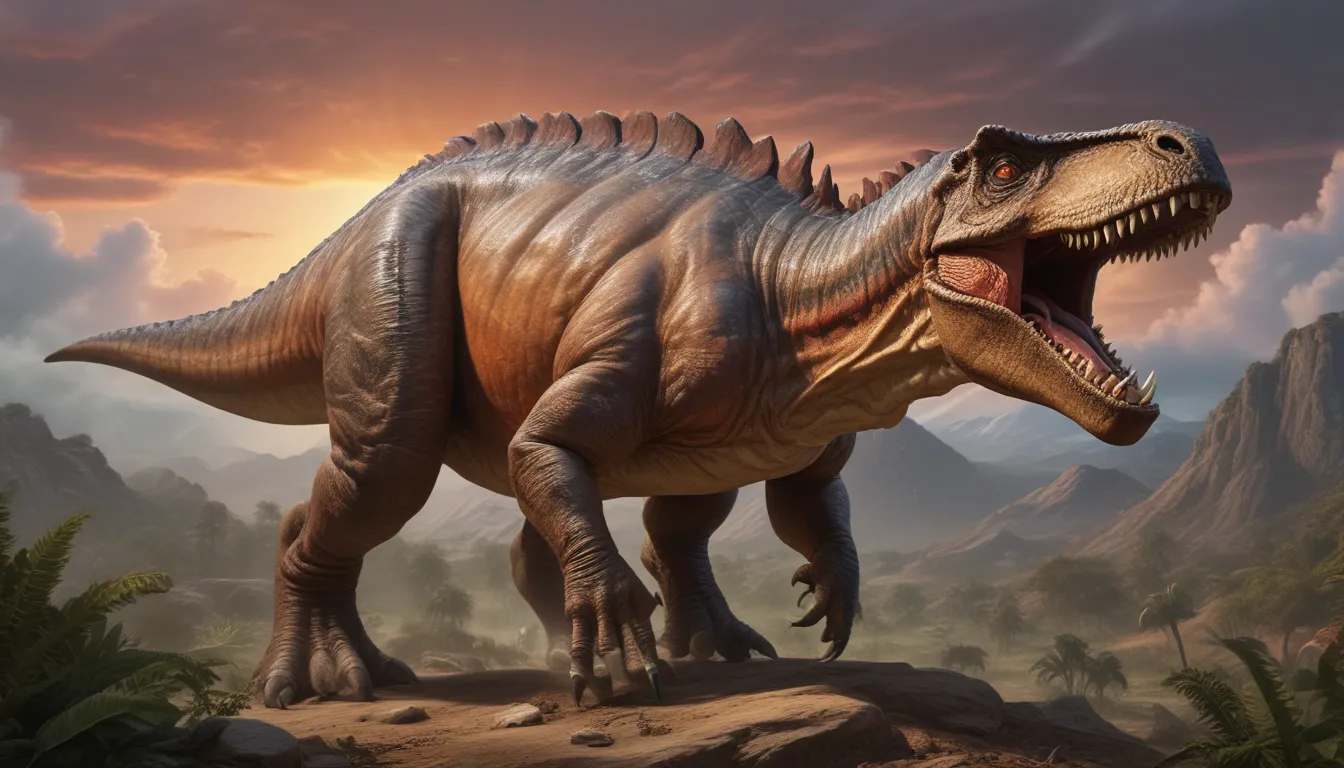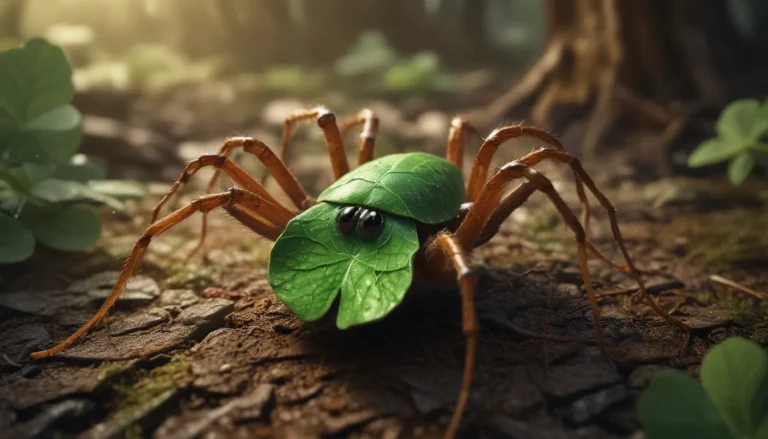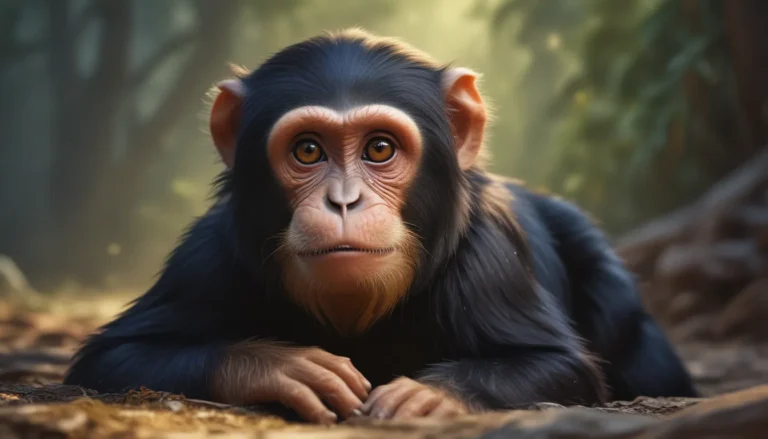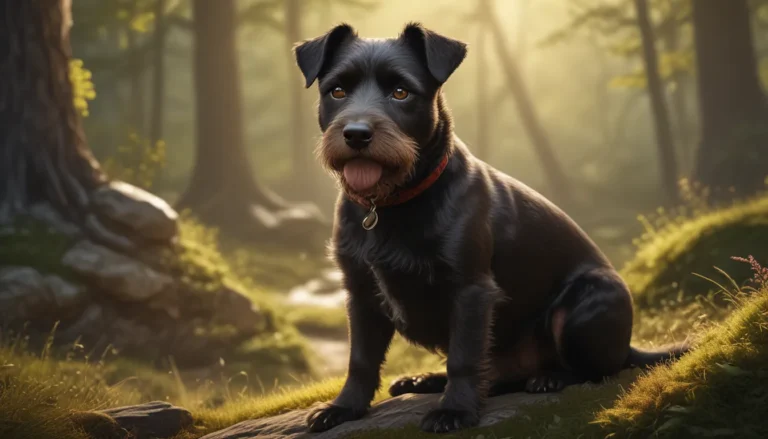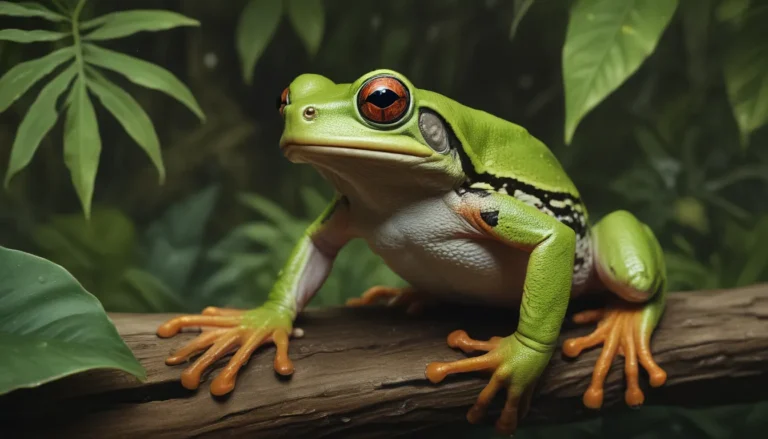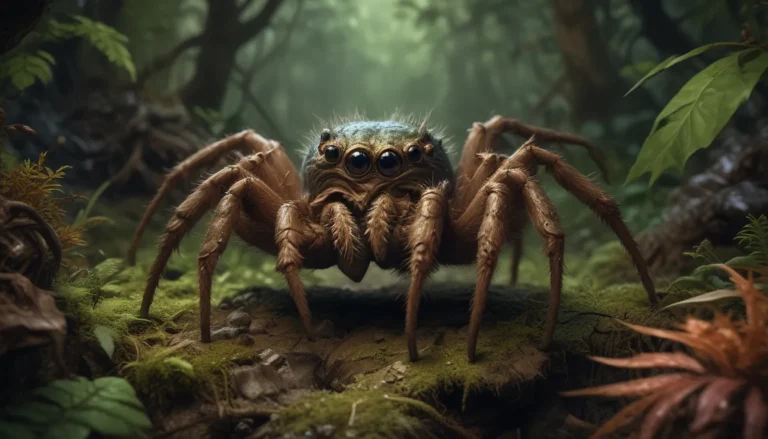The pictures we use in our articles might not show exactly what the words say. We choose these pictures to make you interested in reading more. The pictures work together with the words but don’t take their place. The words still tell you the important facts.
Dinosaurs have long captured the imagination of people around the world, with iconic herbivores like the Brachiosaurus and Triceratops often taking the spotlight. However, the world of dinosaurs also includes a diverse array of fierce and formidable meat-eating predators that once roamed the Earth millions of years ago. These carnivorous creatures, with their sharp teeth, powerful jaws, and hunting prowess, ruled the prehistoric food chain, leaving a lasting impression on our imagination.
Exploring the World of Meat-Eating Dinosaurs
In this article, we will delve into the fascinating world of meat-eating dinosaurs, uncovering 20 captivating facts about these ancient predators. From the mighty Tyrannosaurus rex to the agile Velociraptor, each dinosaur had its own unique traits and adaptations that allowed them to thrive in the prehistoric world. Join us on a journey through time as we unravel the mysteries of these fearsome carnivores and learn more about their incredible diversity and impact on Earth's ecosystems.
Unveiling the Giants of the Prehistoric World
- Tyrannosaurus Rex: Known as one of the largest meat-eating dinosaurs, the Tyrannosaurus Rex, or T. Rex, was a formidable predator during the late Cretaceous period. With its massive size and powerful jaws, this iconic dinosaur continues to capture the imagination of people worldwide.
- Velociraptors: Contrary to popular depictions, Velociraptors were surprisingly small in size, roughly equivalent to that of a turkey. However, these agile hunters were swift and efficient predators, relying on their speed and cunning to capture prey.
- Spinosaurus: Featuring a sail-like structure on its back, the Spinosaurus was a distinctive predator that roamed the Earth during the Cretaceous period. This sail is thought to have played a role in thermoregulation and display, showcasing the unique adaptations of this carnivorous dinosaur.
Uniquely Adapted Carnivores
- Dilophosaurus: Known for its unique crested head, the Dilophosaurus was an agile predator during the early Jurassic period. The two thin, curved crests on its skull set it apart from other meat-eating dinosaurs.
- Carnotaurus: With unusually short arms, the Carnotaurus relied on its powerful jaws and strong legs for hunting. Despite its limited limb mobility, this dinosaur was a fearsome predator in its ecosystem.
- Allosaurus: A top predator of the late Jurassic period, the Allosaurus was an apex predator, preying on other dinosaurs and juvenile sauropods. With its formidable size and hunting skills, it dominated its prehistoric environment.
The Diversity of Meat-Eating Dinosaurs
- Giganotosaurus: Comparable in size to the Tyrannosaurus Rex, the Giganotosaurus was one of the largest known meat-eating dinosaurs. This fearsome predator lived during the late Cretaceous period, showcasing the immense diversity of carnivorous creatures during prehistoric times.
- Utahraptor: As one of the largest raptors, the Utahraptor was a formidable predator measuring around 23 feet in length. Believed to be a pack hunter, this dinosaur utilized its sharp claws and keen senses to capture prey.
- Baryonyx: Characterized by its long, crocodile-like snout, the Baryonyx was a fish-eater that inhabited coastal regions. Equipped with sharp, conical teeth, this dinosaur thrived in aquatic environments.
Evolutionary Marvels of the Prehistoric World
- Carcharodontosaurus: Featuring serrated teeth perfect for tearing through flesh, the Carcharodontosaurus was a dominant apex predator during the mid-Cretaceous period. This dinosaur's unique adaptations enabled it to excel in hunting.
- Suchomimus: Sporting a distinctive crest on its snout reminiscent of the Spinosaurus's sail, the Suchomimus likely used this feature for display or communication purposes. This unique adaptation set it apart from other carnivorous dinosaurs.
Tracing the Ancestry of Meat-Eating Dinosaurs
- Albertosaurus: A close relative of the Tyrannosaurus Rex, the Albertosaurus shared many physical characteristics with its larger counterpart. Inhabiting North America during the late Cretaceous period, this dinosaur played a significant role in its ecosystem.
- Megalosaurus: As one of the first dinosaurs to be formally named, Megalosaurus holds a special place in paleontological history. This early meat-eating dinosaur paved the way for future discoveries and research in the field.
Diverse Features and Behaviors of Meat-Eating Dinosaurs
- Deinonychus: Known for its sickle-shaped claw on its hind feet, Deinonychus used this specialized appendage to slash and disembowel its prey. This unique hunting adaptation gave it a strategic advantage in capturing food.
- Archaeopteryx: With feathered wings indicating the ability to fly or glide, Archaeopteryx was a remarkable dinosaur that bridged the gap between carnivorous dinosaurs and modern birds. Its evolutionary adaptations shed light on the diversity of prehistoric creatures.
- Compsognathus: Dubbed the "compie," Compsognathus was one of the smallest known meat-eating dinosaurs, showcasing the vast range of sizes within the carnivorous dinosaur group.
Unraveling the Mysteries of Ancient Predators
- Eoraptor: Thought to be one of the earliest dinosaurs, Eoraptor dates back to the late Triassic period, offering valuable insights into the evolution of meat-eating dinosaurs. This ancient predator played a crucial role in shaping the carnivorous lineage.
- Sinosauropteryx: The first dinosaur discovered with preserved feathers, Sinosauropteryx revolutionized our understanding of dinosaur appearance and evolution. This important find highlighted the link between carnivorous dinosaurs and modern birds.
- Majungasaurus: With a specialized skull allowing for a powerful bite, Majungasaurus engaged in cannibalistic behavior, preying on its own kind. This unique feeding strategy showcased the diverse behaviors of meat-eating dinosaurs.
- Proceratosaurus: Featuring a prominent nasal crest for communication or display, Proceratosaurus was an intriguing dinosaur with distinctive physical characteristics. This carnivorous creature added to the rich tapestry of prehistoric life.
Conclusion: Unveiling the Rich Tapestry of Prehistoric Life
In conclusion, the world of meat-eating dinosaurs offers a fascinating glimpse into the diversity and adaptations of carnivorous creatures that once roamed the Earth. From the sheer size and power of Tyrannosaurus Rex to the unique features of Velociraptors and Spinosaurus, these predators shaped the ancient ecosystems in which they thrived. By exploring their behaviors, adaptations, and fossil evidence, we gain a deeper understanding of Earth's history and the evolution of life on our planet.
Whether you are a dinosaur enthusiast or simply curious about the wonders of the animal kingdom, embarking on a journey through the world of meat-eating dinosaurs is an adventure filled with discovery and intrigue. These ancient predators continue to captivate our imagination and inspire new avenues of scientific research, uncovering untold stories of our planet's past.
FAQs: Unveiling the Mysteries of Meat-Eating Dinosaurs
- Q: How did meat-eating dinosaurs hunt?
A: Meat-eating dinosaurs utilized a variety of hunting strategies, from ambush tactics to pack hunting. Each species had its unique approach to capturing prey, showcasing the diversity of carnivorous behaviors during the prehistoric era. - Q: What did meat-eating dinosaurs eat?
A: Meat-eating dinosaurs primarily preyed on other dinosaurs, but also hunted smaller animals such as mammals, reptiles, and fish. Their diets varied based on their habitat and hunting capabilities, highlighting the adaptability of carnivorous creatures. - Q: Where have meat-eating dinosaur fossils been found?
A: Fossils of meat-eating dinosaurs have been discovered worldwide, with notable sites including North America, Mongolia, and Canada. These fossil discoveries have provided valuable insights into the distribution and diversity of carnivorous dinosaurs. - Q: Are there any living descendants of meat-eating dinosaurs?
A: Birds are considered the living descendants of meat-eating dinosaurs, tracing their ancestry back to theropod dinosaurs. The evolutionary link between carnivorous dinosaurs and modern birds showcases the enduring legacy of these ancient predators.
Embracing a Journey Through Time: Uncover the Wonders of Prehistoric Predators
As we delve into the world of meat-eating dinosaurs, we unlock a treasure trove of knowledge and discovery that sheds light on the rich tapestry of prehistoric life. Each fact and insight brings us closer to understanding the ancient ecosystems that once flourished with these formidable predators. Join us on a thrilling adventure through time and space as we explore the captivating world of meat-eating dinosaurs, illuminating the wonders of Earth's history and evolution.
